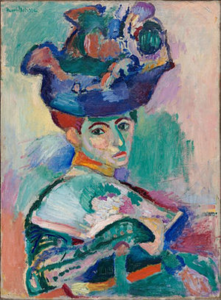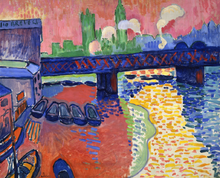- Team Mojarto
Fauvism was the first art movement that took place in twentieth-century France. This avant-garde movement was the first reaction to impressionism and other conventional methods of art. The artists practising fauvism were called the Fauves which means ‘wild beasts’. The word Fauves was true to the unique characteristics of the art and artists where they used bold and non-naturalistic colours directly from the tube. The use of loose dabs of paint wildly on the canvas was also evident in the art.
Henri Matisse and Andre Derain introduced this art style through the former’s artwork titled ‘Women in a Hat’ (1905). Matisse was influenced by artists like Gauguin, Van Gogh and Seurat. Nature became a predominant theme of fauvism. Portraits, landscapes and nudes found their prominence later, where the artists used bold colours to enhance the tone of the images. Moreover, fauvists were interested in the scientific colour theories of the nineteenth century—majorly, the complementary colours. Complementary colours are pairs of colours that appear opposite to each other on the colour wheel, which when used side-by-side in a painting, make each other look brighter.

Fauvism is characterised by bright, emotive colours, simple shapes and painterly mark-making, which in turn attracted Matisse to make this style his forte. The artists moved away from the concept of stillness, of the subject matter, instead of instilling colour with movement and brushwork with energy. They emphasised the power of colour and how it could project a mood and establish a structure within the work of art without having to be true to the natural world.

In India fauvism was popularised in Bengal with an Indian touch. Artists like Jamini Roy, Chittoprosadhad and Jogen Chowdhuri pioneered this style by employing Indian themes. They used very vibrant colours to enhance the mood of the viewer. This style has lost its charm after independence, where Indian art gained more prominence. In the recent past artists like Devajyoti Ray has brought back the distinction and charm of the style, by making vibrant artworks in the brightness of colours.